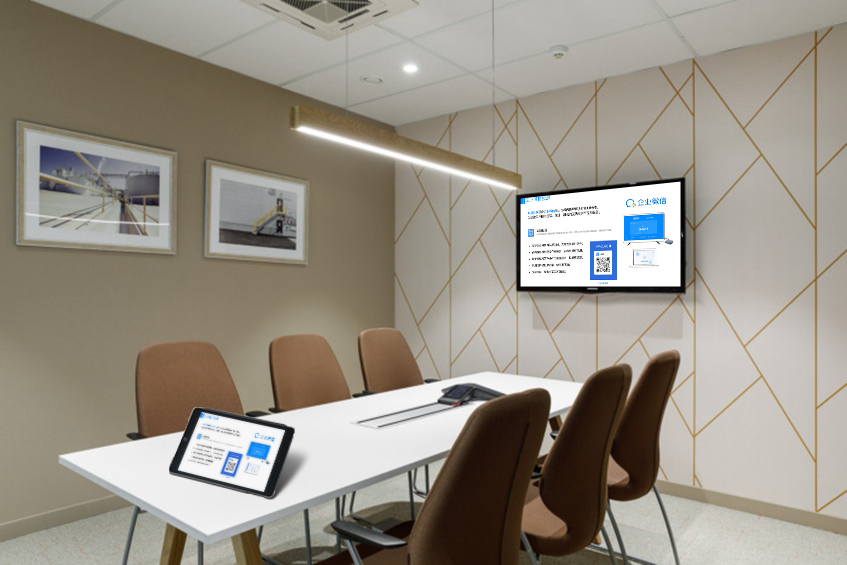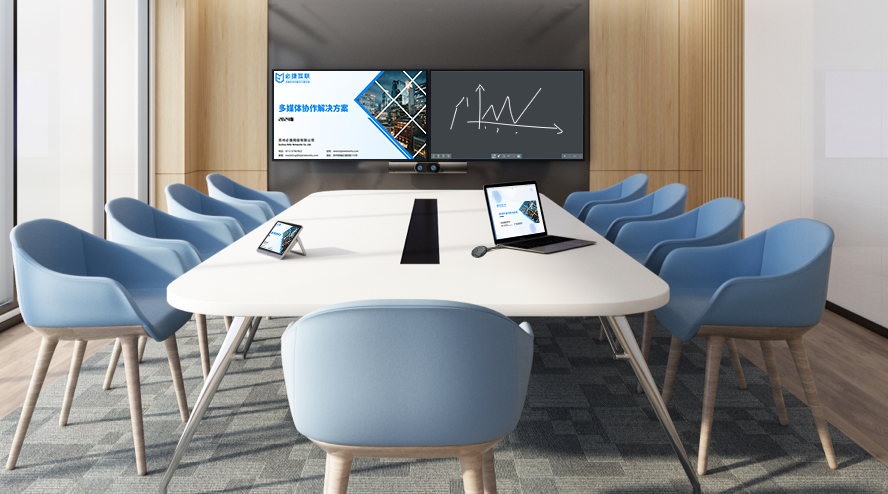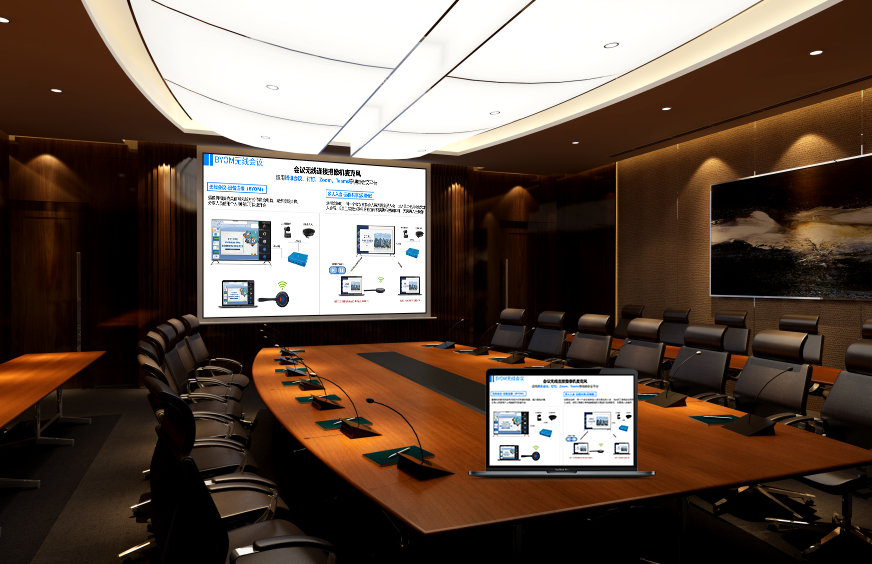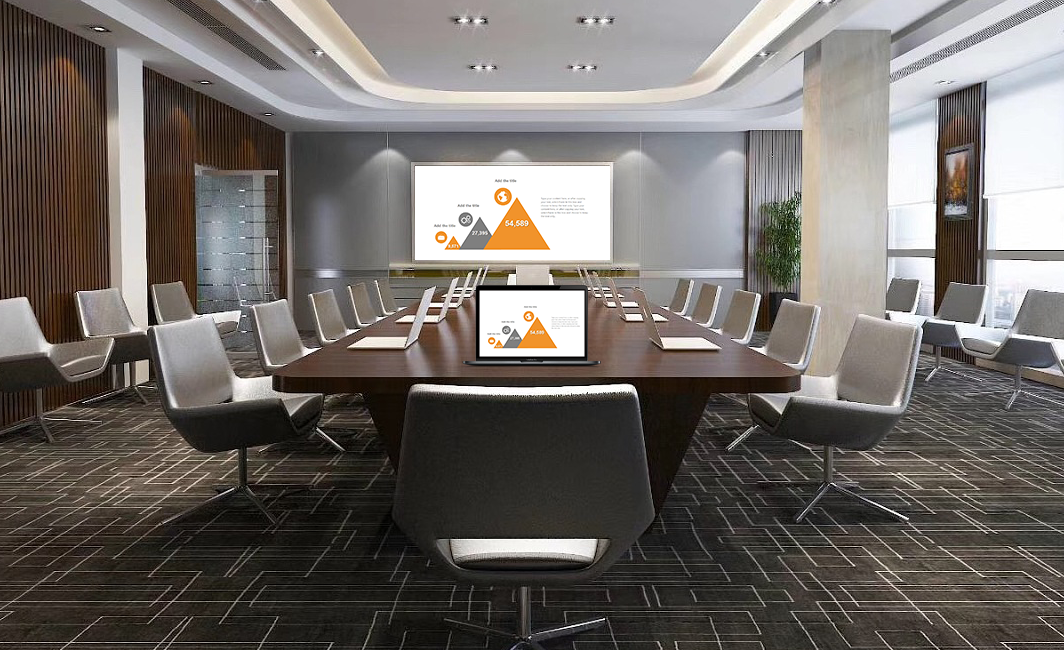Wireless Conferencing: Breaking Traditional Barriers, Ushering in a New Era of Efficient Collaboration
Sweeping through the digital age, the shortcomings of traditional meeting models are increasingly apparent. Cumbersome cable connections and complex equipment debugging severely consume meeting preparation time and reduce efficiency. The emergence of wireless conferencing, like a beacon of light, brings a brand new collaboration experience to modern office, education, and business negotiation scenarios, fundamentally revolutionizing how people communicate and interact.
I. Convenient Connection: Instantly Start Your Meeting Journey
Freedom from Cable Constraints: In traditional meetings, connecting devices like computers, projectors, and audio systems often requires a significant amount of time spent organizing cables and finding matching ports. Even a slight error in wiring can prevent equipment from functioning correctly. Wireless conferencing systems completely eliminate this tedious process. Participants’ computers, phones, and tablets can effortlessly connect to the meeting room’s display and audio equipment via wireless signals. Whether it’s a daily internal corporate huddle or an urgent seminar at an educational institution, device connection can be completed in an extremely short time, allowing for a rapid transition into the meeting state and focusing valuable time on the meeting content itself.
Multiple Connection Options: To meet different user habits and scenario needs, wireless conferencing supports various convenient connection methods, including QR code mirroring, projection code entry, and NFC induction connection. In a business meeting, when a client arrives to present a proposal, they simply scan the dedicated QR code provided in the meeting room with their phone, and the proposal content is instantly mirrored to the large screen, allowing for a smooth presentation and showcasing a professional and efficient image. For users who prefer manual operation, entering a simple projection code can also quickly establish a device connection.
II. Full Platform Compatibility: Adapting to Diverse Device Ecosystems
Seamless System Compatibility: In diverse office and learning environments, people use different operating systems. From common Windows and macOS computer systems to widely used mobile iOS and Android systems, and even domestic systems like UOS and Kylin OS, wireless conferencing systems are perfectly compatible with all. Within an enterprise, some employees use Windows-based Lenovo computers, while others prefer Apple MacBooks. With a wireless conferencing system, devices with different operating systems can seamlessly mirror and share content, avoiding connection difficulties caused by system differences.
Comprehensive Meeting Software Coverage: Whether it’s mainstream Chinese meeting software like Tencent Meeting, DingTalk, and Feishu, or internationally popular options like Zoom, wireless conferencing systems can achieve seamless integration. When enterprises conduct remote international meetings, they can both wirelessly project local materials onto the large screen and simultaneously connect to online meeting software to communicate in real-time with team members worldwide, achieving collaborative work between local and remote participants, breaking down spatial and software limitations.
III. High-Definition & Smooth: Recreating Realistic Meeting Scenarios
4K Ultra HD Visuals: When displaying important design drawings, product detail images, or data analysis charts, clarity is crucial. Wireless conferencing systems utilize advanced video encoding and transmission technology, supporting 4K ultra-high-definition projection, which can precisely reproduce every detail. This allows participants to clearly see every texture and every data point on the screen, ensuring the accuracy of information delivery and facilitating more scientific and rational decision-making. In a design company’s proposal review meeting, designers can wirelessly project 4K resolution product renderings, allowing clients to clearly see the product’s material texture and color transitions, leading to a more intuitive and in-depth understanding of the proposal.
Low-Latency, Stable Transmission: During a meeting, audio and video stuttering or delays can severely impact communication effectiveness, leading to information disruption and hindering interactive exchange. Wireless conferencing systems optimize the wireless transmission link, combined with intelligent channel selection and anti-interference technology, to effectively reduce transmission latency and ensure stable and smooth audio and video. Even in complex network environments with multiple simultaneous connections, meeting content is displayed in real-time synchronization, and speakers’ voices and visuals are precisely matched, just like a natural and fluid face-to-face conversation, making remote collaboration seamless.
IV. Interactive Collaboration: Igniting Team Innovation
Multi-Screen Interaction Sparks Brainstorming: Traditional meetings typically allow only one person to display content on the main screen, making it difficult for others to share ideas in real-time. Wireless conferencing systems support multi-screen interaction, allowing multiple participants to simultaneously project content from their devices onto the large screen for comparative display and collaborative discussion. In a project discussion meeting, members from different groups can simultaneously project their respective proposal ideas and research data, enabling team members to intuitively compare and analyze, discuss issues from multiple angles, stimulate innovative thinking, and accelerate proposal refinement and optimization.
Real-time Annotation for Seamless Communication: When a participant projects content, other members can annotate, highlight key points, and ask questions directly on the projected screen from their own devices. These actions are instantly synchronized to all participants’ screens. In a teaching and training scenario, when a teacher projects a lesson plan, students can annotate and ask questions on the lesson content via their phones or tablets. The teacher can see and answer these questions promptly, enhancing teacher-student interaction and improving teaching effectiveness. In corporate meetings, this real-time annotation feature can also make discussions more focused, feedback more timely, and improve meeting decision-making efficiency.
V. Secure & Controllable: Safeguarding Meeting Information
Strict Access Control: Corporate meetings often involve sensitive information such as important business secrets and strategic plans, making information security paramount. Wireless conferencing systems provide a strict access control mechanism, allowing only devices within the corporate intranet or authorized accounts to establish mirroring connections. This effectively prevents external unauthorized devices from accessing, ensuring meeting information security from the source. By integrating with existing enterprise authentication systems, such as AD domain authentication and LDAP authentication, it ensures that only verified employees can participate in meeting mirroring, preventing information leakage risks.
Encrypted Transmission & Data Erasure: During meeting data transmission, high-strength encryption algorithms like AES-256 are used to encrypt audio, video, and document data, ensuring data is not stolen or tampered with during transmission. After the meeting, the system also has an automatic mirroring cache erasure function to prevent meeting content from remaining on devices, further protecting corporate information security. For industries with extremely high information security requirements, such as government departments and financial institutions, these comprehensive data security protection measures can effectively eliminate the hidden dangers of meeting leaks.
VI. Smart Management: Optimizing Meeting Resource Utilization
Pre-Meeting Booking & Device Linkage: Deeply integrated with enterprise OA office systems and calendar systems, employees can pre-book meeting rooms and link corresponding wireless conferencing equipment within the system. At the booked time, the equipment automatically unlocks, allowing participants to use it without additional operations, avoiding equipment conflicts and improving meeting room resource utilization. At the same time, the system will remind participants of the meeting time and location in advance, ensuring meetings start on time.
Post-Meeting Data Statistics & Analysis: The wireless conferencing system can automatically record data such as equipment utilization, meeting duration, and participant information, and generate detailed reports. By analyzing this data, enterprises can understand the usage of meeting rooms and equipment, rationally adjust resource allocation, and optimize meeting arrangements. Furthermore, by evaluating data such as participant engagement, they can assess meeting effectiveness, provide a basis for future meeting improvements, and continuously enhance meeting quality and corporate operational efficiency.